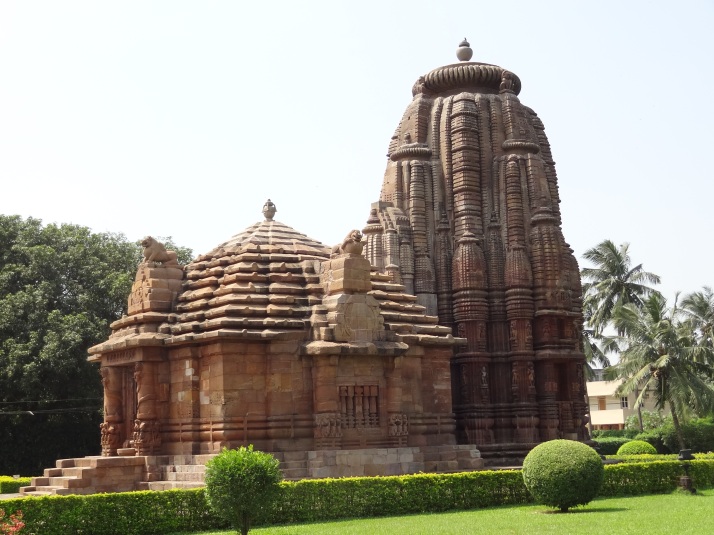With exceptionally great feeling of satisfaction, we moved from the tribal museum to our next destination. Unusually for a long time, I kept silent when we were traveling to the sightseeing place. My mind was still wandering in the museum filled with tribal-preservation artifacts. The thoughts went still when a large truck blew the horn waking me up. Ohh yeah, we were on to our next spot, the Rajarani Temple in Bhubaneswar.
The temple has a long history, which can be traced in the eleventh century. It is located just six kilometers away. We paid the entry fee of Rs.5 as it was maintained by the archeological department of India. The structure exudes the elegance and beauty of Odisha’s traditional architecture believed to be built to showcase love.
I was amazed by the style of the structure, which looked completely new to me. Our guide explained to us that the temple consists of two structures depicting ‘pnaheratha’ style, where there is a vamana, central shrine with a spire-looking curvilinear on the top at the height of 59 feet.
The second one is a viewing hall having a pyramidal roof. I noted it is called ‘jagamohana’, home to the deity Lord Shiva. This is another temple of the same deity, except for the name not peculiar. Before I could clear out my doubt, the guide explained the origin of the name borrowed from the sandstone of light red and yellow.
Walking into the main shrine, I observed the erotic sculptures on the walls, revealing the long passed time, of Shiva in different incarnations and Parvati too. The temple has a great significance for its architecture looking strikingly similar to the Khajuraho.
We strolled around looking at the tall carved figures of nayikas engaged in various acts. Furthermore, we noticed eight other carvings, which are explained to us as dikpalas (guards). They are positioned on the east, southeast, south, southwest, west, northwest, northeast and north and are called “Indira, Agni, Yamraja, Nirritti, Varuna, Vayu, Isana and Kubera respectively.
We offered our prayers to the deity, which gave us a fulfillment. I offered my prayers silently as I always do and thanked god for giving me a wonderful opportunity to visit the place filled with spirituality.
